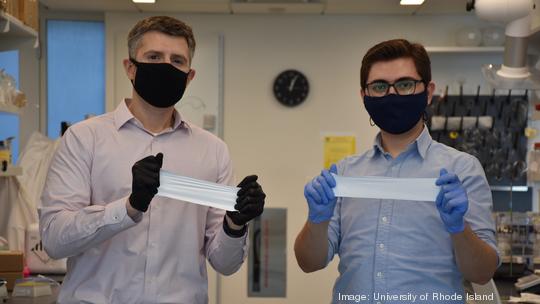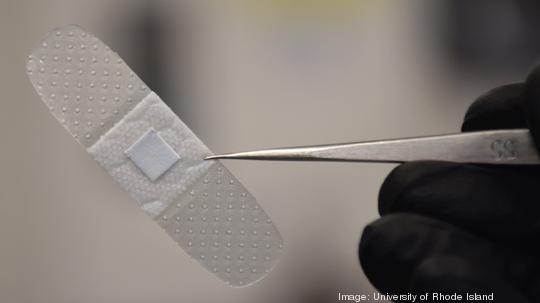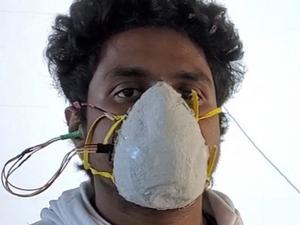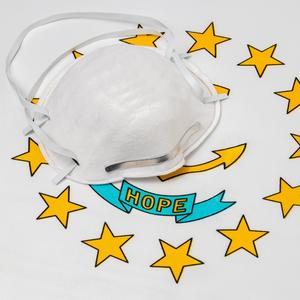
Bandages have always helped cover up wounds, control bleeding and protect against infections. But what if they could do more? What if a bandage had the ability to alert people about infections on their wounds before they morphed into something much more dangerous?
That may soon be possible with the invention of the Smart Bandage, a bandage that not only covers up a wound but can also detect the onset of an infection and monitor it.
Dan Roxbury, an assistant professor in the college of engineering at the University of Rhode Island, and Mohammad Moein Safaee, a former doctoral student, came up with the Smart Bandage in Roxbury’s NanoBio Engineering Laboratory in URI’s Fascitelli Center for Advanced Engineering.
The Smart Bandage contains carbon nanotubes that have special sensing abilities and can monitor the amount of hydrogen peroxide in a wound.
“I felt that up until recently, there hasn’t been as much realized for carbon nanotubes, at least commercially,” Roxbury told Rhode Island Inno. “There is still a lot of promise there in terms of the potential in their unique properties.”
Roxbury said a constant challenge has been trying to immobilize the nanotubes so they don’t cause inflammation on any type of animal or human — something that’s hard to do while retaining the nanotube’s sensing properties.
Safaee, who recently completed his doctoral degree in chemical engineering, had learned how to make polymeric fibers prior to coming to URI. He used those skills to create a micro-fabrication process that essentially spun the carbon nanotubes into the fibers of a bandage to create the Smart Bandage.

Roxbury and Safaee functionalized the nanotube sensors to be able to detect hydrogen peroxide, which white blood cells produce when fighting bacteria that causes disease. The bandages can detect concentrations of hydrogen peroxide when they first pop up, signaling the beginning of an infection.
Placing the nanotubes into the fibers of the bandage is just one part of the equation. The device also needs to monitor the infection.
The Smart Bandage transmits data about hydrogen peroxide concentrations to a smartphone-type device. The device then automatically alerts the patient or health care provider. Roxbury said his goal for commercialization efforts is to eventually reduce the size of the device to a wearable like an Apple Watch to make it easier to carry around.
Roxbury believes the Smart Bandage will be most useful for patients with diabetes, who are particularly susceptible to large wounds.
Not only are bandages on larger wounds more difficult to remove to check for infection, but removal can actually increase the risk of infection as well, so minimizing the amount of times these bandages need to be removed will be great for diabetic patients, he said.
Currently, Roxbury is planning to file a provisional patent for the Smart Bandage. He has also submitted proposals to continue the research.
Roxbury and Safaee are not planning to spin out any companies with the technology. Roxbury has responsibilities to URI, while Safaee recently took a postdoctoral position in MIT’s Furst Lab. Instead, Roxbury said he is planning to shop the idea around to see if any startups or established companies like Johnson & Johnson or 3M are interested in licensing the Smart Bandage.
Bram Berkowitz is a contributing writer for Rhode Island Inno.






